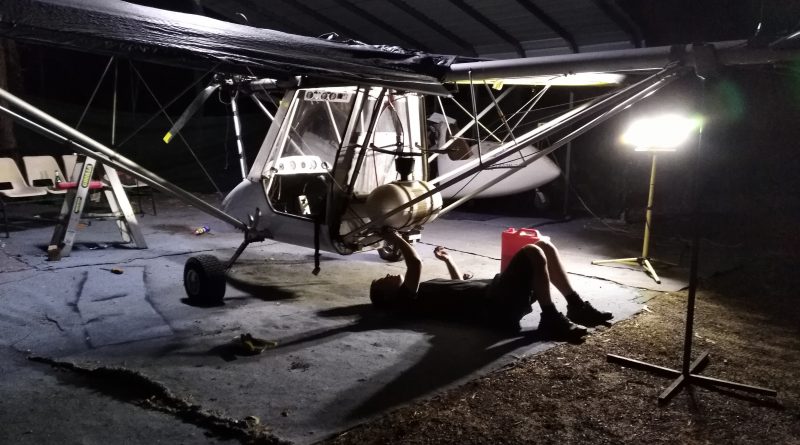Zen and the art of aircraft maintenance
Featured image (above): Working on these aircraft happens after work and on the weekends. (Image Courtesy: Fiona Shanahan, 2018)
I’ll admit I quickly become excited when I hear that there is an airworthy aircraft on flying display at a museum I’m visiting and I’m quick to book tickets to an upcoming air show. The reason for this is that it fills me with so much joy to see these old machines going through the motions for which they were intended – to fly! I’ve also seen firsthand how aviation buffs, academics and enthusiasts alike become a little downhearted when they look at a static display and consider that they are now grounded.
There are at least two aviation museums that include flying displays in Australia. The Royal Australian Air Force (RAAF) have an interactive flying display on Tuesdays, Thursday and Sundays at exactly 1300 hours on the Williams Base in Point Cook, Victoria. Temora Aviation Museum is a civilian aviation museum that declares on their website that they are ‘…first and foremost a flying museum, and it’s flying displays are conducted by the Temora Historic Flight Club…’.

Whilst the joy and crowds these flights brings seems argument enough to encourage all aviation museums to include flying displays there are of course a substantial number of considerations, implications and issues that must be addressed before the idea can take off.
- The aircraft must be maintained at a certain level of airworthiness
- The cost of flying an older aircraft must be considered
- There must be a pilot available who is trained in flying the old aircraft (this is the foremost issue for the Darwin Aviation Museum)
- There are countless insurance and local council matters that must be adhered to
- The ability of staff and/ or volunteers who have the expertise to maintain it
- The status of airspace above and around the museum
Debates on this subject in academic and museum circles often focus of matters of significance, authenticity and originality and how maintaining aircraft in flying conditions often necessitates a loss of original fabric. I’ve recently spent considerable time with a group of ‘backyard’ aviation enthusiasts who have made a hobby out of buying old, non-airworthy aircraft and rebuilding them to flying condition. The only concrete restriction they have set themselves is that they can only purchase smaller, ultralight type aircraft. This restriction is simply because that is what they are licenced to fly.
These enthusiasts have spent considerable time locating and chatting to people who still have knowledge of these aircraft. This includes rebuilding aircraft frames whilst watching lengthy videos made by the original developer as he made the drifter aircraft. When I asked why they didn’t ask the manufacturer, they replied ‘he died a few years prior’. They’ve also had to contact many other enthusiasts who have original designs or tools used to make these aircraft. In doing so, not only have they allowed these aircraft to fly again, but they have also amassed an incredible historical collection about these aircraft and their associated designers and manufacturers.
The main issue the enthusiasts have had are locating parts and the cost. Mostly parts are no longer available, not many people are aware of the parts or they are rare and therefore expensive. For example, it was whilst rebuilding an old 503 engine that one enthusiast discovered there are in fact four types of the Rotax 503 engines and most of the parts they had collated over the years were A type parts which didn’t fit his C type engine. The purchasing and rebuilding of the Thruster aircraft pictured above to the original design with the required parts saw costs exceed $8000, which is more than the aircraft is worth.
So what motivates these people to take on these projects? Local recreational pilot and enthusiast Tim Earl explained his reasoning for it (whilst awkwardly crouching under the Thruster’s main wing, painting on the registration numbers).
‘You know how you see a puppy in the pound and you immediately want to rescue it? Well that’s how I feel whenever I see a dilapidated or abandoned aircraft sitting in a paddock or hangar. You just can’t let it die, you have to rescue it!’
So when you see a flying aircraft on display you aren’t simply watching a mechanical triumph, you are also seeing the obsession and emotions of people who see working to keep historic aircraft alive, and gathering the knowledge required to maintain that airworthy status, as not only a hobby, but a rescue mission.


why not use the latest engine??
why you become a little downhearted when they look at a static display and consider that they are now grounded?